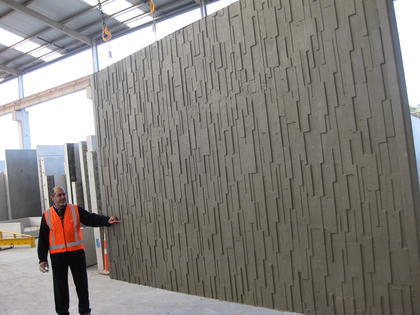The different textures of stones have always fascinated architects who have craved for using it in different projects. The natural designs depicted on stone surfaces have strong appeal due to its uniqueness as it is extremely difficult, if not impossible, to find two designs that are similar. This appeal has been captured with immaculate accuracy in concrete as you would see from unique graphic designs replicated on walls, bridges and many other architecture. Technology, creativity and innovation have contributed immensely in developing concrete wall form liners that have made it possible to replace the expensive use of natural stones to create splendid architectural patterns and designs that display the creativity of architects. Since form liners can be used to create the same appeal as that of natural stone and this cost effective solution has gained widespread popularity that is still growing.
Surface Finish Defects Get Hidden
If aesthetics and beauty is one reason for choosing concrete surfaces with patterns and designs and even colorizing it, there is also a technical angle to it. It is extremely difficult to get a flawless and smooth surface finish for concrete walls. There will be some imperfections that will catch the eye that might diminish its aesthetic appeal. This can be overcome by creating textured surfaces on concrete that is capable of suppressing the imperfections or the imperfections appear to be a part of the texture that has been imparted to concrete. There is an overall increase in the aesthetic appeal when walls are constructed with concrete wall form liners.
Why Use Form Liners?
Form liners are used to create designed and decorative concrete surfaces of vertical structures because there is no other way that it can be done during the course of casting concrete. However, for horizontal surfaces, the task of generating designs on the surface can be accomplished by the method of stamping on fresh concrete to create impressions. But it is impossible to apply the same technique on vertical surfaces with fresh concrete. Form liners can produce the desired architectural appearance that is necessary for concrete structures that will be continuously exposed for viewing.
The Method of Use
Fiberglass and plastic are the commonly used materials for concrete wall form liners that have textured surfaces and are tied to the form facing to generate the pattern that is desired. Ribbed patterns were the most commonly used designs but now many other designs like rock patterns and graphics as well as photographs are being reproduced by using advanced techniques and new materials in manufacturing form liners. In order to get the exact surface finish that is desired, the form liners have to be supported by suitable formwork. The liners are attached to the formwork with fasteners and there are special methods of attaching that depends on the type of form liner that is being used.
The architect’s vision is aptly captured in designing the form liners that are usually made from plastic or polyurethane. For precise replication of design a mold or master texture is often used.
